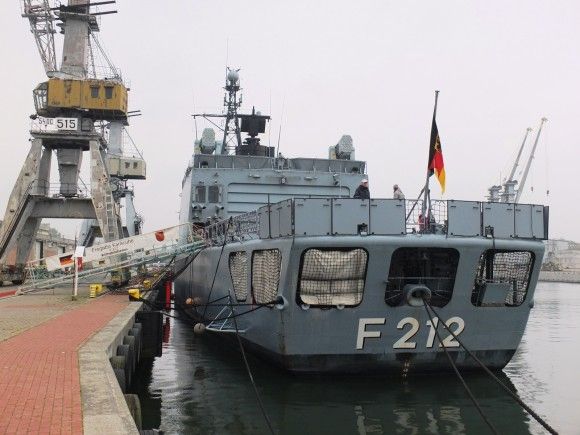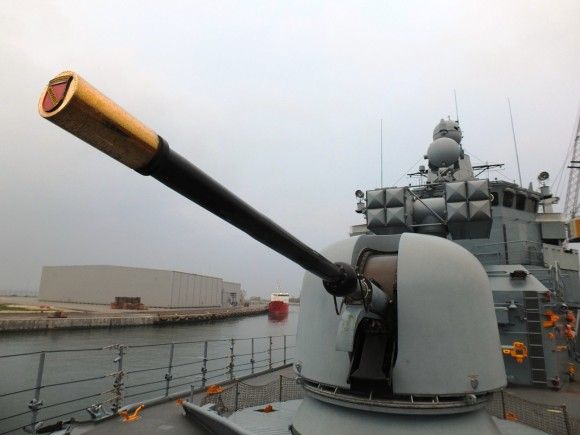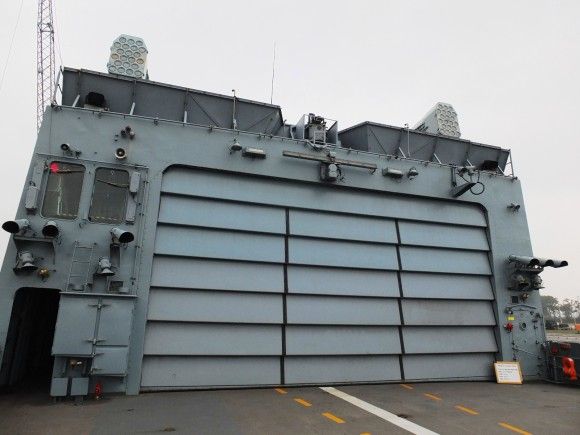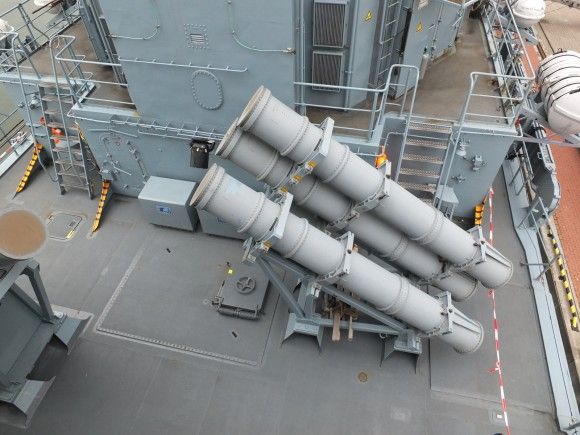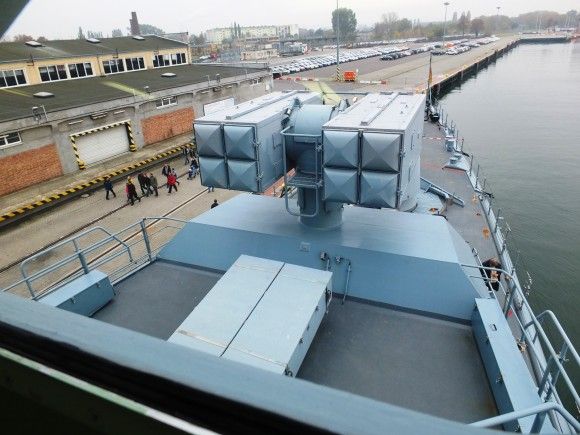Land Forces
MSPO 2016: Tracked Variant of the Rak Mortar
During the MSPO defence industry exhibition in Kielce, Huta Stalowa Wola presented its self-propelled Rak mortar, based on a tracked chassis. The vehicle is based on a light tracked chassis developed by HSW. Ultimately, Rak mortars on a tracked platform could be introduced into use in the heavy brigades, the core of which is formed by the main battle tanks or IFVs - as Jerzy Reszczyński suggests.
It is worth to recall the fact that Rak mortar was, at the very beginning of the R&D works, to be based on a tracked chassis – and this was an obligation, not a matter of choice. This happened long before the mortar was integrated with the Rosomak wheeled APC platform. Now, as the wheeled variant is already being manufactured, the manufacturer of the system, HSW S.A., reminds us that the second variant of the Rak system remains at its disposal and that it is ready to be implemented and produced.
If we assume that the wheeled variant of the mortar is dedicated for the battalions of the brigades utilizing the Rosomak APC platform, acting as the equipment used by the support elements, then the tracked variant is expected to act as a support weapon for the heavy units. The aforesaid reasoning is, above all, supported by the performance and traction of the carrier itself. Rak based on a wheeled platform is capable of operating in the terrain within which Rosomak-equipped units are going to be active, it is also able to use the road network for the purpose of deployments, with a speed matched to the speed at which the APCs would be moving, for which the Rak mortar is going to act as a support measure. It is also very important that the logistical aspects related to the interchangeable profile for most of the parts and components of the APC and the support company vehicles are unified. This would be achieved thanks to the unification of the platforms used by these elements.
The tracked Rak mortar has its off-road capacities defined at a level which is closer to the vehicles used by the heavy units, offering a greater capability of overcoming the terrain obstacles, and with less significant requirements related to top speed, during the regrouping operations, or when the formation changes its position. Naturally, the tactics for operational use of both these variants may vary, depending on the army. The armed forces often develop varied, terrain dependent rules of using the same assets.
The profile and combat capabilities that remain at disposal of both vehicles are virtually identical, and this is because the autonomous turret system with identical equipment, responsible for opening fire, is also the same in case of both platforms. The whole weapons system includes a ballistic computer with a fire control system, automatic mortar targeting system, external and internal communications suite, daytime and night-time observation system, usable within a scope of 360 degrees, laser warning receiver, 81 mm smoke grenade launchers for self defence, optronic sight for firing the weapon straight forward, coupled with a laser range-finder with a range of 10 kilometres, INS/GPS navigation, odometer, auxiliary weapons system (UKM 2000D machine gun with Bazalt sight or other weapon specified by the end user).
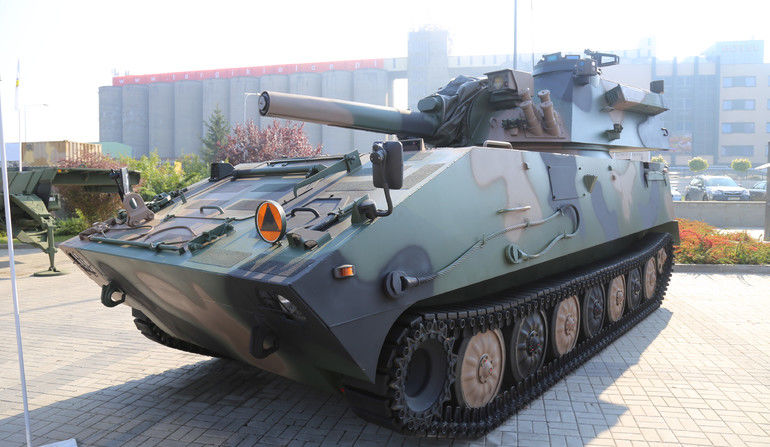
Such method of creating the artillery systems has been developed by HSW at the beginning of the 21st Century, when concept works began, the goal of which was to develop a self-propelled automatic mortar. The mortar constituted a response of the Polish defence industry to the interest expressed by the Polish Ministry of Defence, referring to the offer created by the Patria company which was looking for buyers, with a reference to its AMOS and Nemo system (single- and twin-barrel self-propelled mortars, based on a wheeled carrier which was a derivative of the Patria AMV 8×8 vehicle which later on became a prerequisite for the Polish Rosomak carrier).
Rak was the third artillery project undertaken by HSW in its “new age” era, following the series manufactured WR-40 Langusta rocket launcher and Krab self-propelled howitzer. In case of the rocket artillery system, one could consider it to be a very advanced modernization of the fire unit, which was done by fitting it with modern fire control and command and communications system, and placing it on a modern carrier, providing the crew with a significantly higher level of safety and better ergonomics. HSW has delivered 75 WR-40 launchers for the Polish Army’s combat units, and couple of examples for training purposes.
In case of the painful development process referring to the Krab howitzer, we could have witnessed a license-based solution, within which no room for modifications exists. And the attempt to develop a Polish chassis for the license-manufactured turret turned out to be a problem which posed a threat to the whole programme. For many years, the programme was troublesome. The emerging issues have been solved once a license to manufacture a Korean chassis has been acquired in December 2014. The first Krab vehicle utilizing this chassis was officially rolled out during the MSPO 2015 defence industry exhibition. In April this year, two cannons using that carrier were officially delivered to the user. In August 2016 another six Krab howitzers in this version were assembled at the HSW facility, and it seems that manufacturing the first 24 cannons for the first artillery unit using this system will proceed without any further obstacles.
Meanwhile, when the Rak mortar was being designed, it was decided to develop an autonomous turret system which may be fitted onto any base platform selected by the ordering party. And the only requirement for the carrier was that it should provide a proper load carrying capacity, and space within the body which would make it possible to accommodate the turret.
From the very beginning of the works on the turret system, it was assumed that there would be also an option of placing it in stationary structures, e.g. within fortifications. After a few years of work, it was also decided to start development process pertaining to a stabilized platform, which was aimed at making it possible to place the turret on the naval vessels. The works above were undertaken with countries in mind, in case of which rivers act as significant strategic transport and communication routes, which is quite common e.g. in some specific countries of Southeast Asia. Controlling the rivers and the adjacent areas has a great value, when it comes to maintaining the security.
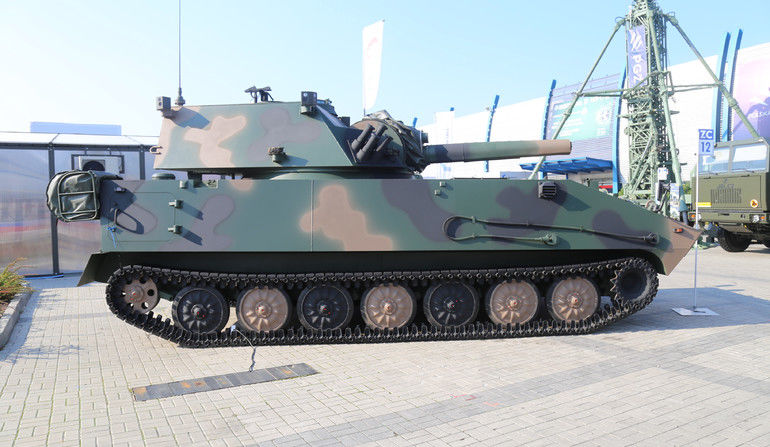
The universal profile of the adopted assumptions, besides the obvious advantages and long-term benefits (e.g. option of mutating the mortar) also had to entail some specific costs. One of the costs was to be incurred due to the expansive architecture of the turret itself. The basic reason for that stemmed from a need of creating a space within the turret, which could accommodate the full automatic reloading mechanism containing 20 rounds, as well as any equipment related to the operation of the targeting or communications systems. Thus, the turret of the Rak vehicle is quite large. Despite that fact, height of the tracked and wheeled variants of the mortar is also different – significantly. The higher centre of gravity may also form some limitations when it comes to the offroad capabilities of the vehicle, e.g. referring to the steep terrain with significant side slope. From the point of view of the combat abilities, the fact that the mortar silhouette would be visible for the enemy is of limited importance, since this type of armament is not usually used in the direct contact with the enemy.
The initial field tests of the Rak mortar were carried out with the use of a stationary test station. However, it quickly turned out to be obvious that if the weapon does not receive a carrier soon, the whole programme may come to an end and be abandoned. However, at the beginning, gaining an access to the chassis of which it was known that it would meet the structural requirements (which has also been proven by the Nemo 120 mm mortar) was difficult, for numerous reasons.
At HSW SA it was decided to quickly adapt the only available, successful 2S1 howitzer chassis, manufactured at the HSW facility for a long time throughout the eighties and the nineties. This system has been used by the Polish Army, in a number of more than 500 examples. The adaptation works were successful, and at the beginning of October 2009 the newly configured Rak was presented at the artillery firing range of the Dynamic Tests Centre of the Military Institute of Armament Technology in Stalowa Wola. At the same time, intensive works were carried out in order to create a new carrier, which was for the first time presented during the MSPO exhibition back in 2009. However, at the time it was too early to integrate the said chassis with the Rak turret system.
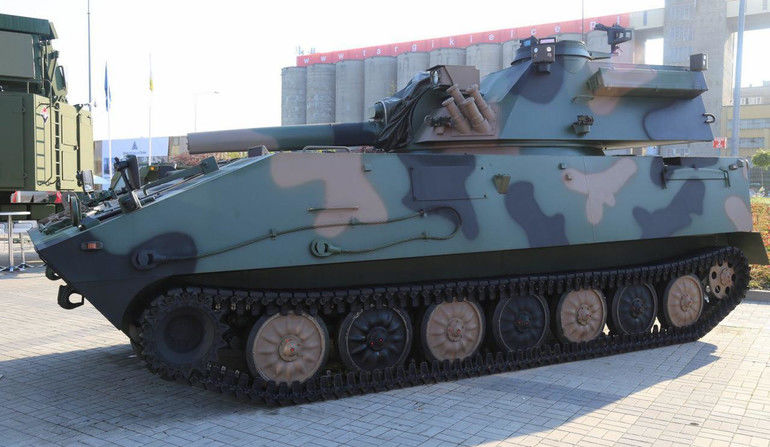
As the time went by, when the test results regarding the Rak system confirmed the assumptions made by the engineers from Stalowa Wola, and when the state financing was provided for development of the Rak platform (at the beginning it was an independent programme run by HSW), the company also overcame the obstacle in a form of lack of access to a wheeled chassis which was to become a carrier for the Rak mortar. Starting from the year 2010, the test programme involved the target variant of the mortar, based on the Rosomak APC. At the time, HSW was focused on that platform, leaving the tracked variant aside. This was done mainly due to the fact that the Polish Army was not interested in rapid procurement of such platform on a tracked carrier. The Ministry of Defence clearly expressed its will though, to procure a support company-sized element, equipped with Rak units adopted for cooperation with the motorized units – operating a wheeled platform. The final stage of those declarations was seen in signing a contract at the HSW company, pertaining to the procurement of the equipment for eight support companies armed with SMK120 (self-propelled wheeled mortar 120 mm) or M120K vehicles.
This does not mean that works on the tracked variant have been abandoned. The temporary 2S1 Gvozdika chassis, used for the first tests, was replaced with a new light tracked chassis. The new platform was a derivative of the 2S1 chassis to some degree. Being a part of the MT-LB family, it was derived from the Opal II chassis, also developed at HSW. This chassis, proposed by HSW as a carrier for the command vehicles and command and staff vehicles for the 155 mm Regina tube artillery system (with Krab howitzer acting as the effector) was well suited to act as a carrier for the new variant of Rak.
Only the hull and the drivetrain come from the aforementioned predecessors. The obsolete JaMZ-238W engine, with a power output of 177 kW, has been replaced with the MTU 6V199 powerpack, with a power output of 260 kW. The hull received additional armour on the inside of the main armour. The manufacturer declares that the vehicle offers ballistic protection at level 1, in line with the STANAG 4569 norm, since such level of protection was expected by the Ordering Party. The reinforced armour and changed position of the centre of gravity (which is a result of the location of the turret system) deprived the platform of its amphibious capabilities. However, no requirements within that scope existed, even for the wheeled variant.
The tracked Rak mortar, the crosswise dimensions of which are virtually identical to those of the 2S1 howitzer (7.37 meters long, 2.87 meters wide) is capable of attaining maximum speed of 60 kph (wheeled variant’s top speed is 80 kph), so that its performance is similar to the one present in case of the Gvozdika howitzer. The platform is capable of moving on 60% grade slopes, and move along, in a transverse manner, at 30% grade slopes (35% for the wheeled variant). The vehicle wades through water which is 1.5 meters deep, is able to drive over vertical obstacles which are 0.4 meters high (0.5 meters for the wheeled variant and 0.7 meters for the 2S1 howitzer), ditches which are 2 meters wide (2.1 meters for the wheeled variant and 3 meters for the Gvozdika platform, for the sake of comparison). Minimum operational range on one tank of fuel is defined as 500 kilometers by the manufacturer.
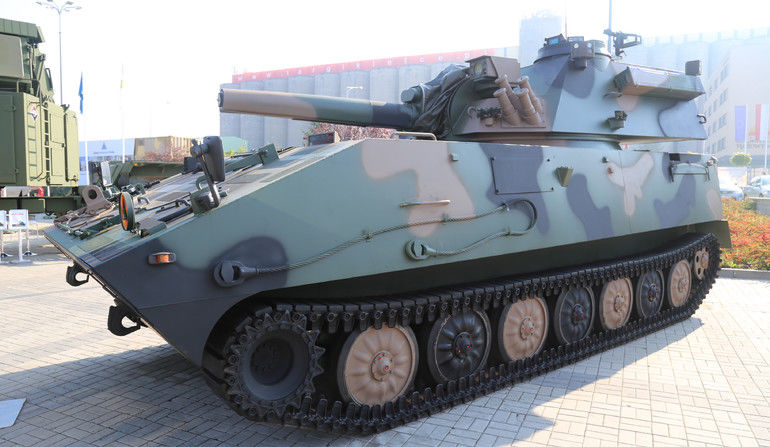
Placing the turret on a German Marder IFV gave the HSW engineers a chance to test the idea of an autonomous turret system, and universality of the solution. The project was initiated by the German partner who had a chance to use a certain number of the withdrawn IFV for that purpose. Adaptation and integration of the Rak turret on the Marder vehicle chassis was finalized at HSW S.A. in several days, and such version of the mortar was presented, among other events, during the 2014 edition of the MSPO salon. However, no export contracts were signed as a result of those works. The vehicle was developed with the foreign users in mind, in connection with the needs of the foreign partner who would like to receive such orders for the platform.
At the moment, HSW is in possession of two examples of the tracked variant of the Rak mortar. Both vehicles are a basis for further research and development works. They are also a subject of offers which are addressed, so far, to the potential customers abroad. Polish Ministry of Defence so far has postponed procurement contract pertaining to this variant of the vehicle. Never, however, was a negative stance expressed with a reference to this offer. The subject was to be renegotiated at the end or following the end of the procurement process referring to the equipment for the first eight support companies using the wheeled Rak mortars. This should happen in 2019.
Recently it was also assumed that until then, the works on the new Borsuk amphibious IFV would be advanced enough to create a design line which would form a more modern and optimal chassis for the tracked Rak mortar. However, it is hard to assess now, whether and what direction is going to be taken. Representatives of the HSW S.A. company note that this would create benefits similar to those visible in case of the wheeled variant of the mortar, which is to become a part of the motorized units, where high level of technological and logistical unification has been obtained when it comes to the drive systems, namely between the carriers for the mortar and the APCs - the Rosomak platform. In case of the Borsuk vehicle supporting the heavy brigades, Rak mortar which is a support unit, could use the same, unified tracked platform. The decisions within that scope are yet to be made by the Ministry of Defence.
Jerzy Reszczyński

